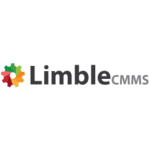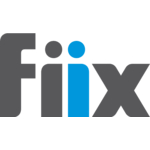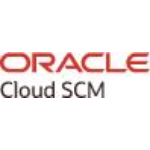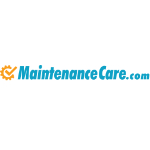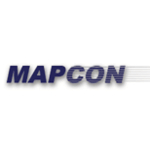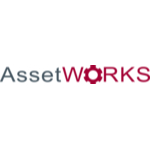Maintenance Care is a solution for maintaining and managing your facilitys equipment and assets. Say goodbye to costly repairs and unexpected disruptions with our efficient and user-friendly software. With Maintenance Care, you can streamline your ma...Read Maintenance Care Reviews
List of Best Maintenance Management Software
Showing 10 of 56 productsVerizon Connect is a smart is a software that revolutionizes the way businesses manage their fleet operations. With its advanced technology and seamless integration, Verizon Connect simplifies fleet tracking, improves productivity and enhances overal...Read Verizon Connect Reviews
Limble CMMS is a solution for efficient and hassle-free maintenance management. With user-friendly features and a powerful system, Limble CMMS streamlines your maintenance processes, increasing productivity and minimizing downtime. Say goodbye to pap...Read Limble CMMS Reviews
Hippo CMMS - your all-in-one solution for streamlining maintenance operations. From tracking assets and work orders to scheduling and reporting, Hippo CMMS simplifies and organizes your maintenance processes. Say goodbye to chaos and hello to efficie...Read Hippo CMMS Reviews
Fiix is a leading software solution that is transforming the way maintenance and asset management is done. With its user-friendly interface features, Fiix makes it easier for businesses of all sizes to manage their assets and maximize their productiv...Read Fiix Reviews
eMaint CMMS is a software that assists businesses of all sizes in managing and maintaining their assets with ease and efficiency. With its user-friendly interface and robust features, eMaint CMMS streamlines maintenance operations, increasing product...Read eMaint CMMS Reviews
Oracle Fusion Cloud SCM is a solution for streamlining supply chain management. With its advanced technology and user-friendly interface, this innovative software is designed to optimize business operations and drive growth. Say goodbye to outdated p...Read Oracle Fusion Cloud SCM Reviews
MAPCON is a solution for all your maintenance needs. With advanced features and user-friendly interface, it simplifies maintenance processes and helps streamline operations. Trusted by numerous businesses, MAPCON is the go-to software for efficient a...Read MAPCON Reviews
BlueFolder is a solution for managing your service business. With its user-friendly interface features, BlueFolder helps you streamline your workflow and improve overall efficiency. Keep track of your clients, assignments, and schedules all in one pl...Read BlueFolder Reviews
AssetWorks is a leading software company that specializes in providing solutions for asset management. With years of experience and a team of highly skilled professionals, AssetWorks provides innovative is a software solutions to help organizations e...Read AssetWorks Reviews
- What Is Maintenance Management Software?
- Top Reasons Why Businesses Need Maintenance Management Software?
- What Are the Top Key Features of Maintenance Management Software?
- What Are the Top Benefits of Maintenance Management Software?
- What Are the Steps to Choose the Right Maintenance Management Software?
- What Are the Types of Maintenance Management Software for Different Industries?
- What Are the Technology Trends for Best Maintenance Management Software?
- What Are the Deployment Options for Maintenance Management Software?
What Is Maintenance Management Software?
Maintenance management software, often known as maintenance management system (MMS), is a tool used to track and organize a building's or equipment's maintenance, repair, and operations (MRO). It aids in scheduling, meeting deadlines, alerting people, and other data management duties related with maintaining a facility operational.
Maintenance management system software keeps track of assets and provides an overview of how they are doing, as well as assisting planners in determining the most cost-effective strategy to address difficulties.
In addition, the software tracks and saves maintenance histories for future reference and analysis. Maintenance management tools helps to enhance tracking, reduce expenses, improve reaction times, and generate better maintenance plans for the future.
Top Reasons Why Businesses Need Maintenance Management Software?
1. Increases efficiency – Maintenance management software automates manual tasks, allowing businesses to operate more efficiently and quickly.
2. Enhances communication – The best maintenance management software enables fast communication between maintenance personnel, facility management, and other stakeholders.
3. Saves time – Automation of manual processes saves time and resources that would otherwise be wasted on completing routine tasks.
4. Improves accuracy – Automation also enhances accuracy when it comes to entering and consistently updating maintenance records.
5. Keeps records current – Maintenance management system software helps ensure that maintenance records, including labor costs and materials used, are kept up-to-date.
6. Reduces costs – Automation of manual tasks, monitoring of costs, and tracking of inventory allows businesses to reduce costs associated with repair and upkeep.
7. Prevents equipment breakdown – With maintenance management tools, businesses can identify and address potential issues before they turn into costly breakdowns.
8. Streamlines processes – Maintenance management software can streamline interaction between multiple stakeholders, such as suppliers, contractors, and manufacturers.
9. Enhances safety of facility – By keeping up with maintenance tasks, businesses can adhere to safety standards and prevent accidents.
10. Provides visibility – Maintenance management system software provides insight into maintenance costs and help to identify unnecessary expenses.
11. Improves asset utilization – The best maintenance management software helps to track the performance and utilization of assets and maximize its effectiveness.
12. Improves productivity – Automating mundane tasks frees up staff members to focus on other, more pressing matters.
13. Generates reports – Businesses are able to quickly generate up-to-date reports on asset performance and labor costs.
14. Improves compliance – Businesses can remain up-to-date with compliance requirements and ensure compliance with regulations.
15. Enhances customer satisfaction – Customers are likely to be more satisfied with the services of a business that prioritizes maintenance and upkeep.
What Are the Top Key Features of Maintenance Management Software?
The following are the top critical features of maintenance management software:
1. Asset Tracking: Enter all asset-related data into the system, such as asset type, serial number, supplier, purchase date, and asset location.
2. Automated Scheduling: Create dynamic schedules to manage and automate preventative maintenance tasks.
3. Workorder Management: Increase efficiency by using simple order forms and automated procedures.
4. Reporting and Analytics: Analyze data to gain a better understanding of overall system performance.
5. Inventory Management: Monitor inventory levels to identify and restock essential parts on time.
6. Documentation: Ensure that all documentation adheres to regulatory standards.
7. Integration: link to existing databases and other systems with ease.
8. Mobile Access: Use mobile devices to access the maintenance management system software from anywhere.
9. Attendance and Time: Employee time tracking should be streamlined.
10. Cost Management: Keep track of the personnel and material costs connected with maintenance tasks.
What Are the Top Benefits of Maintenance Management Software?
1. Increased Efficiency: Maintenance management software can assist in tracking and completing service orders efficiently. It minimizes paperwork, simplifies job documentation, and keeps task lists succinct and organized.
2. Cost Savings: The best maintenance management software can assist to decrease the overall cost of ownership and operation of assets by ensuring that machinery and equipment are frequently maintained and that any potential concerns are discovered before they become costly breakdowns.
3. Increased Productivity: Maintenance management tools can assist increase asset uptime while also decreasing the time required to execute normal maintenance chores.
4. Reduced Risk: Companies can utilize maintenance management system software to track regulatory compliance and ensure safety measures are followed.
5. Improved Scheduling: By utilizing built-in notifications and automated scheduling, best maintenance management software may assist businesses in staying on top of preventative maintenance chores and ensuring they are completed on time.
6. Expand Inspection: With maintenance management software, businesses can conduct more extensive inspections and collect more accurate data on the state of their equipment and assets.
7. history Data: Maintenance management tools maintains history data on completed jobs, allowing users to quickly analyze the past and identify areas for improvement.
8. Transparency: Different departments can see real-time changes, which aids communication and collaboration on maintenance activities.
What Are the Steps to Choose the Right Maintenance Management Software?
1. Determine your goals: Determine what you expect to accomplish by investing in maintenance management software, such as increased efficiency, cost savings, and safety.
2. Define your requirements: Identify the features and functionality you desire, as well as which features are critical.
3. Research and analyze vendors: Identify possible vendors and evaluate their products to verify their compatibility for your objectives.
4. Compare features and pricing: Compare the features and pricing of each product to see which one offers the most value for your money.
5. Request a demonstration: Request a product demonstration to confirm that it fulfills your aims and criteria.
6. Make your choice: Once you've discovered the product that best meets your company's needs and budget, make your choice.
What Are the Types of Maintenance Management Software for Different Industries?
Maintenance management software is used in a variety of industries and applications. The types vary based on the industry and its requirements, but they may include:
1. Manufacturing: Industrial maintenance software often includes an inventory control system to track parts and supplies, a comprehensive repair schedule, work costing, and reporting capabilities.
2. Facilities: Tools for managing work orders, scheduling preventative maintenance, generating asset records, and tracking components inventory may be included in software used to maintain buildings and other assets.
3. Transportation: Transportation-specific maintenance software frequently incorporates a fleet tracking system, cost management modules, and vehicle-specific maintenance capabilities.
4. Food sector: Food industry software may incorporate temperature control systems, traceability features, asset management and material tracking capabilities, and so on.
5. Software as a Service (SaaS): Cloud-based Maintenance Management software frequently includes analytics, reporting, and alerting functions, allowing teams to monitor and manage maintenance needs from any device.
What Are the Technology Trends for Best Maintenance Management Software?
The following are the technological trends for the finest maintenance management software:
1. Cloud-based software: The use of cloud-based software in maintenance management is quickly rising. Users of cloud based maintenance management software can access data and apps from any device, at any time, from any location. This improves the security and efficiency of maintenance management activities.
2. Mobile Applications: Mobile applications are an excellent approach to improve the efficiency and convenience of maintenance management activities. Features such as automatic work orders, asset tracking, repairs, and maintenance scheduling are available in mobile maintenance management software.
3. Artificial Intelligence (AI): AI has a wide range of applications in the best maintenance management software. AI enables automated maintenance work scheduling, predictive analysis of equipment and parts in need of maintenance, and intelligent decision-making. This technology aids in the continuation of processes.
4. Internet of Things (IoT): IoT technologies can assist in the development of a linked maintenance process. IoT solutions enable the automatic gathering of data from devices, data storage, and device performance measurements. This technology can aid in the development of more effective maintenance methods.
What Are the Deployment Options for Maintenance Management Software?
Maintenance management software deployment options include:
1. On-premise: This option entails putting the software directly onto an organization's own servers, which can then be monitored and controlled remotely.
2. Cloud-based: In this case, the cloud based maintenance management software is operated on an external online server maintained by a software provider. Because companies do not have to bother about downloading or installing the application directly, remote hosting can give convenience and faster speed.
3. Hybrid: Maintenance management tools entails combining on-premise and cloud-based technologies. It can offer enterprises the benefits of both options: the ability to govern the software for strict security, as well as the ease of cloud-hosted apps.

